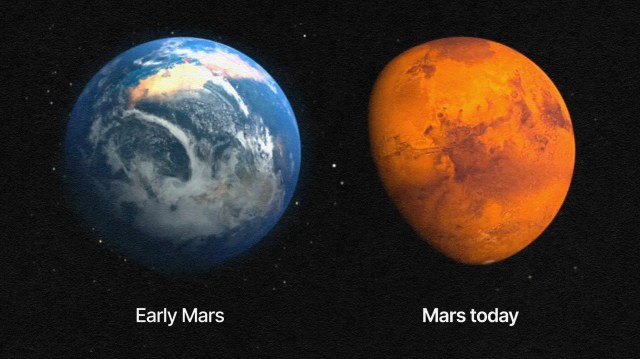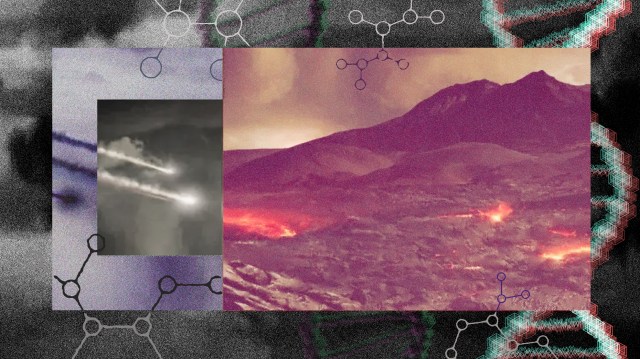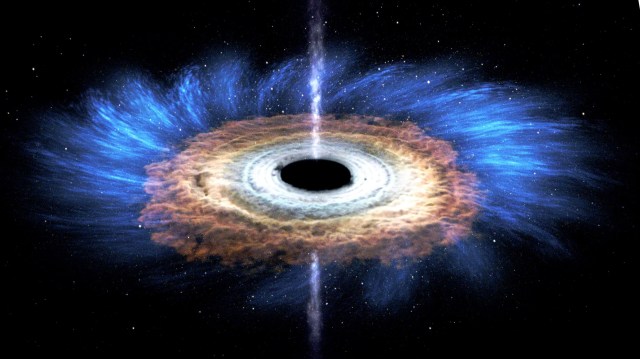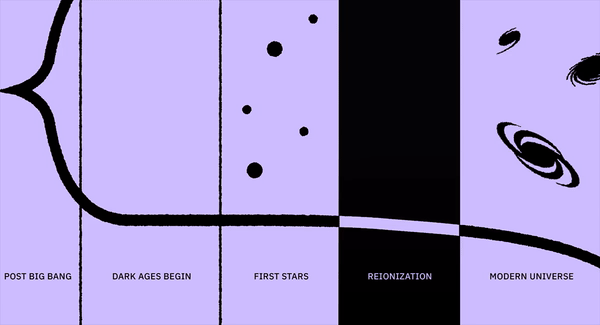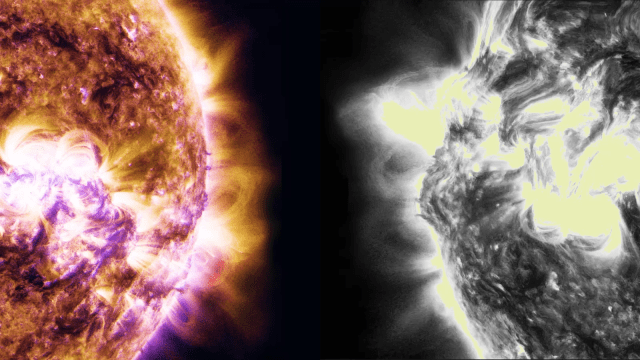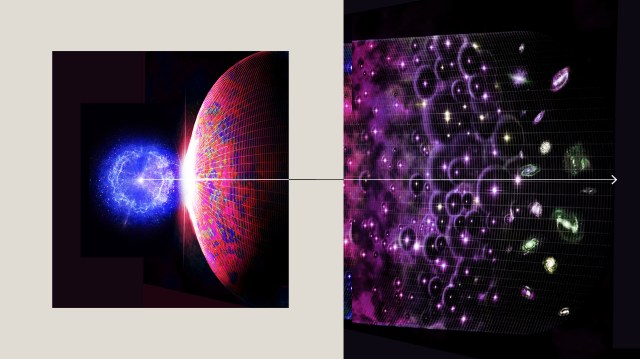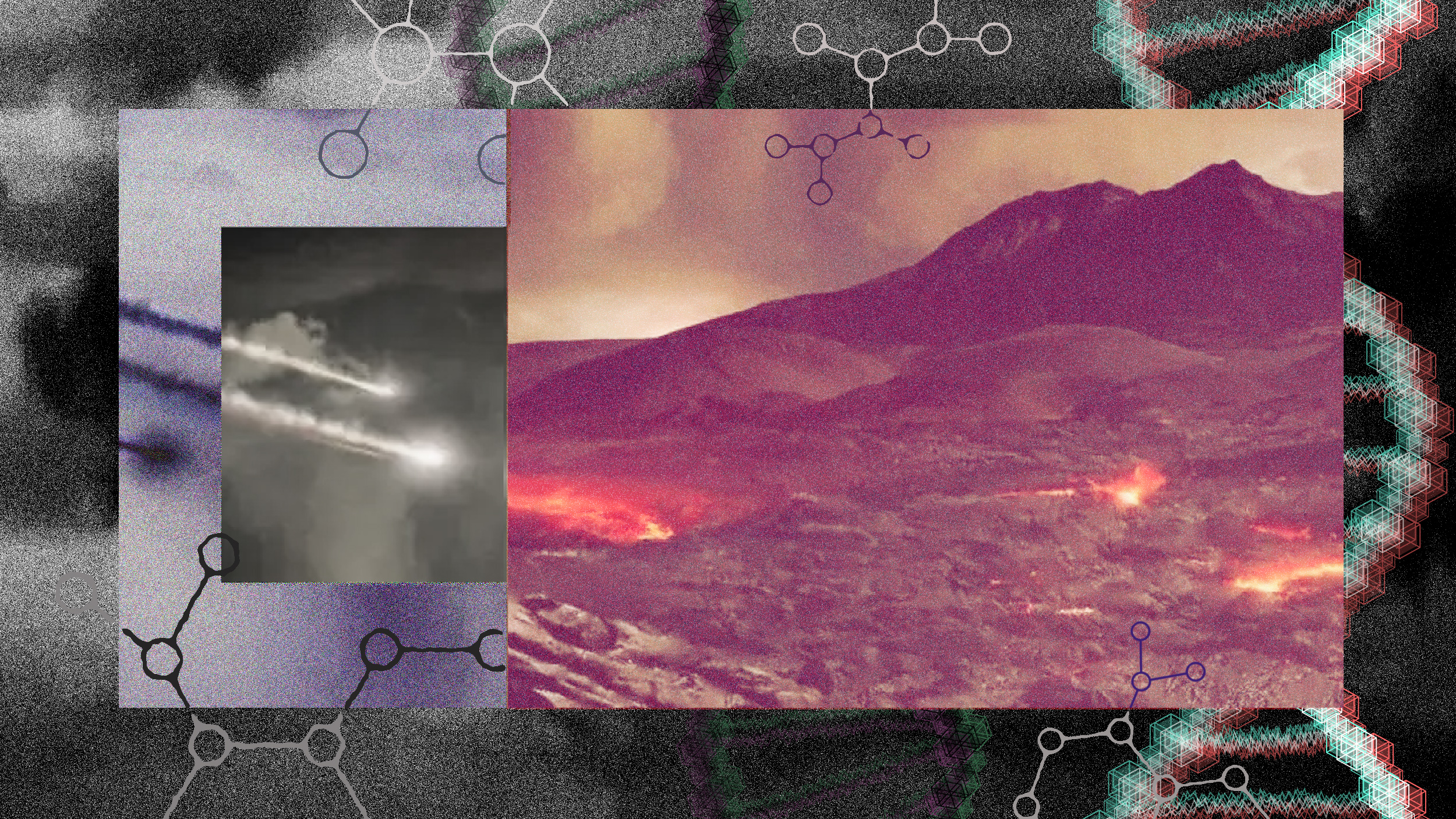What was it like when humans first arose on planet Earth?
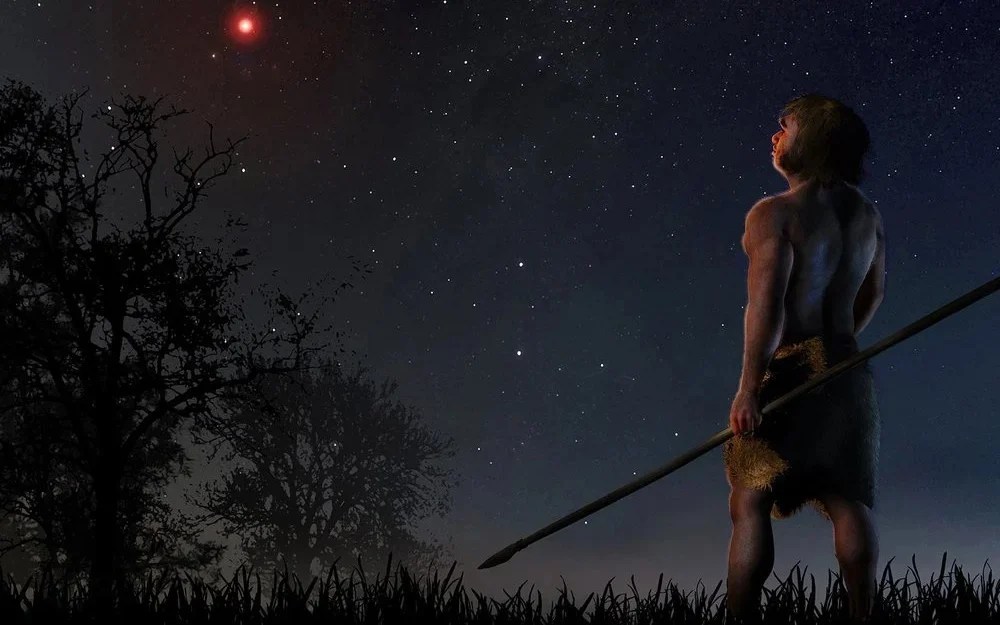
- For billions of years, the only Earth life was single-celled. Widespread complexity is recent: about 600 million years old, and mammals only rose to prominence in the last 65 million years.
- But among the mammals, the earliest primates gave rise to monkeys, great apes, hominids, and eventually, our own species itself: homo sapiens.
- We owe our existence to the survival of all the ancestral species that preceded us, and our link with our evolutionary cousins remains written in our DNA to the present day.
It’s hard to imagine, given how abundant and macroscopic life on Earth is today, but for nearly all of Earth’s history — upward of three billion years and likely closer to four — there were no organisms more complex than a single-celled life form on our world. It wasn’t until the Earth itself was nearly four billion years old that the advent of large plants and animals finally occurred. Complexity exploded around that time, as the combination of multicellularity, sexual reproduction, and other genetic advances brought about the Cambrian explosion. Many evolutionary changes occurred over the next 500 million years, with extinction events and selection pressures paving the way for new forms of life to arise, develop, and occupy ecological niches that suddenly became vacant.
And then, around 65 million years ago, an epic event catapulted a class of small, largely scavenger animals — the mammals — into a prominent role they had never occupied before. As a catastrophic asteroid strike occurred, it wiped out not only the dinosaurs, but practically every animal weighing over 25 kg (excepting leatherback sea turtles and some crocodiles). This was Earth’s most recent great mass extinction, and left a large number of niches unfilled in its wake. Mammals rose to prominence on land in the aftermath of this event, leading to the first humans, which arose fewer than 1 million years ago. Here’s our story.

Our Solar System is and has always been a chaotic place, with objects such as asteroids, Kuiper belt objects, and Oort cloud objects constantly getting gravitationally perturbed by the planets and other objects in their vicinities. The extinction event that occurred at the end of the Cretaceous period was triggered by a massive asteroid strike, as an asteroid somewhere between 5 and 10 kilometers in diameter collided with Earth. The impact kicked up a layer of dust that settled all over the world, a layer unusually rich in the element iridium: a telltale sign that this object originated from the asteroid belt.
On the older side of that layer, fossils such as dinosaurs, pterosaurs, ichthyosaurs, and plesiosaurs are abundant. Giant reptiles, ammonites, and large classes of plants and animals all existed prior to that event, along with small, flying birds and the tiny, land-dwelling mammals. After that event, on the younger side of that sedimentary layer, no dinosaurs, flying reptiles, or giant oceanic creatures persisted. However, the overwhelming majority of mammals survived. With no larger predators to stop them, they grew, diversified, and experienced a population explosion. Primates, rodents, lagomorphs, and other forms of mammals, including placental mammals, marsupials, and even the egg-laying mammals were all abundant at the start of the Cenozoic epoch.
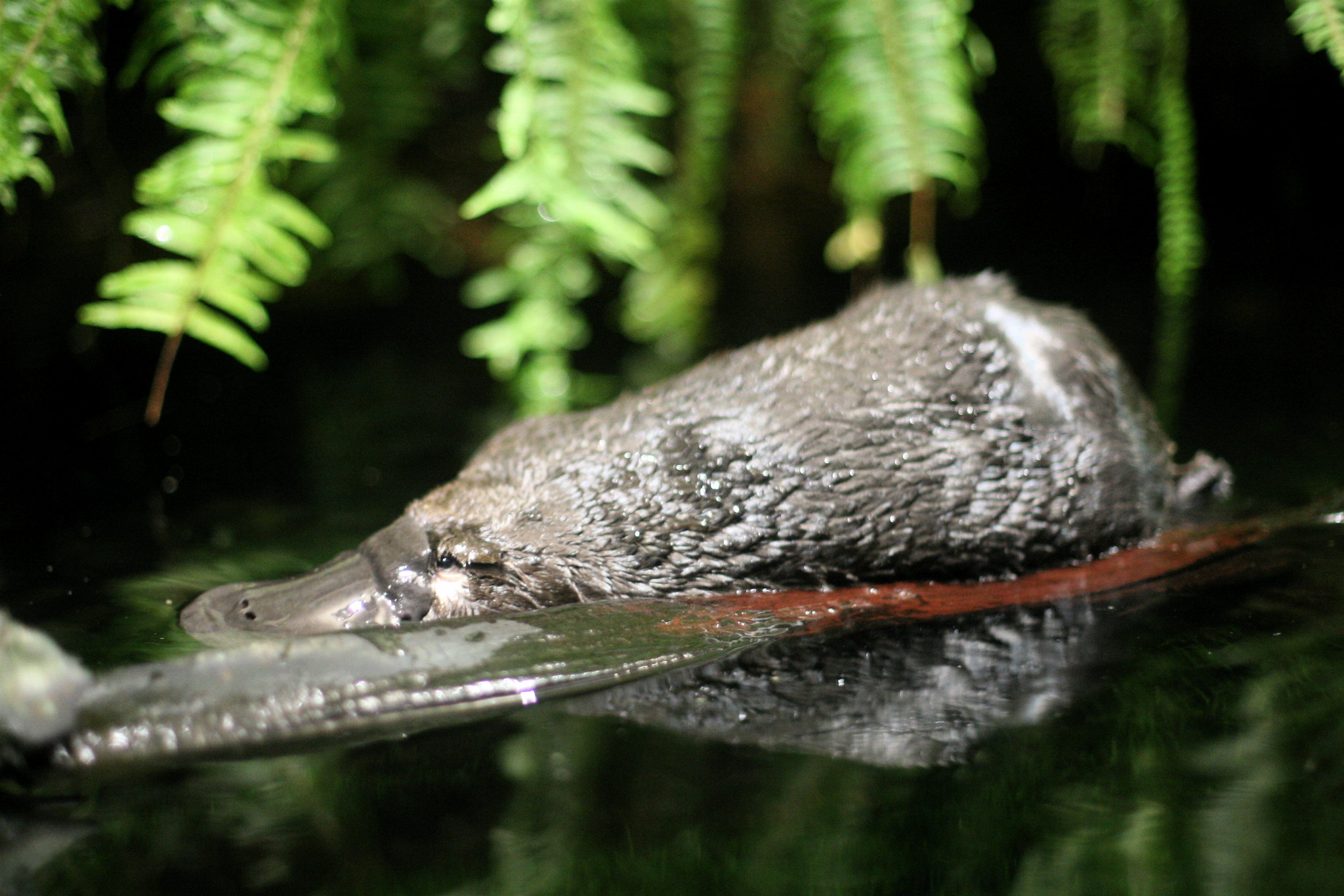
As we run the paleontological clock forward from the start of that time period, beginning 65 million years ago, we find that almost immediately, the primates began diversifying even further. Originally composed solely of small, lemur-like creatures, an evolutionary split occurred 63 million years ago — just 2 million years after the demise of the dinosaurs — resulting in two major groups of primates.
- The dry-nosed primates, known formally as the haplorrhines, which developed into modern monkeys and apes.
- The wet-nosed primates, known as the strepsirrhines, which developed into modern lemurs and aye-ayes.
Within the group of dry-nosed primates (the haplorrhines), another big genetic change occurred around 58 million years ago, as the first novel and unique evolutionary branch became distinct from the rest of the dry-nosed primates: the tarsier. With a face resembling a bug-eyed owl, its enormous eyes granted it a remarkable adaptation: the ability to see very well under even extremely dimly lit conditions. For the first time, a mammal had gained the ability to see and function well even at night.

The niche that the tarsier occupied was sufficiently different from the remaining groups of primates that they have their own classification: the tarsiiformes. For a time, they once ranged across Europe, Asia, North America, and northern Africa, but their only surviving members at present reside in southeast Asia. This type of evolutionary splitting occurs every so often, and is by no means unique to primates; our evolutionary history is incredibly difficult to reconstruct, especially with so many extinct ancestors dating back so many millions of years in natural history.
Although we normally don’t think very much about our distant cousins and how they develop once they’ve split off from us, it isn’t just haplorrhines like us (and our direct ancestors) that underwent interesting phases of evolution. All throughout the past 65 million years — just as it was before that time — the various mammals, birds, plants, and other living organisms evolved together on planet Earth. Evolution is often driven by environmental changes, and that includes all the floral and faunal changes that occur together on our planet. As the dry-nosed primates thrived on land, other changes would soon cause disruption in the seas.

55 million years ago, a sudden rise in greenhouse gases caused the global average temperature to swiftly rise, and the heat transfer into the oceans wound up wiping out many deep-ocean animals and plants. This transformation left many large, unfilled niches in the ocean, paving the way for cetaceans (the large oceanic mammals) to develop, as land mammals first adapted to become semi-aquatic and, later on, fully aquatic.
50 million years ago, some of the even-toed mammals began evolving into sea-dwelling creatures. The artiodactyls may have all evolved from a single, common ancestor, or may have evolved independently. Animals like Indohyus, which dates to 48 million years ago, may have given rise to protocetids: shallow-water mammals that returned to land to give birth.
Right around that time, 47 million years ago, the primate Darwinius masillae existed, with a spectacular example of a preserved fossil, known as Ida, having been recovered by modern humans. Although this was originally touted as a proverbial “missing link” in human evolution, Ida is not a haplorrhine like the apes, but a strepsirrhine: a wet-nosed primate.

However, after another 7 million years had elapsed — bringing us to just 40 million years ago — an important development occurred among the dry-nosed primates: the New World monkeys branched off from the rest of the haplorrhines. Humans, as well as our ape ancestors, are all descended from Old World monkeys; New World monkeys are the first simians (also known as the “higher primates”) to evolutionarily diverge from our lineage. The New World monkeys would go on to colonize most of South America, where they are still found in great abundance today.
The Old World monkeys, however, continued to thrive and successfully occupy their niches, while diversifying in body size and physical features. 25 million years ago, the first apes arose from the Old World monkeys, splitting off in a very different way from the split that resulted in the New World monkeys. The apes — defined by the complete lack of a tail of any type — would go on to give rise to many of the close relatives of humans that survive today: including both the lesser apes and our closer relatives, the Great Apes.
The earliest ape to split off from the common ancestor of humans-and-apes was the Gibbon, a lesser ape that first arose 18 million years ago; 20 different species of Gibbon are known today.
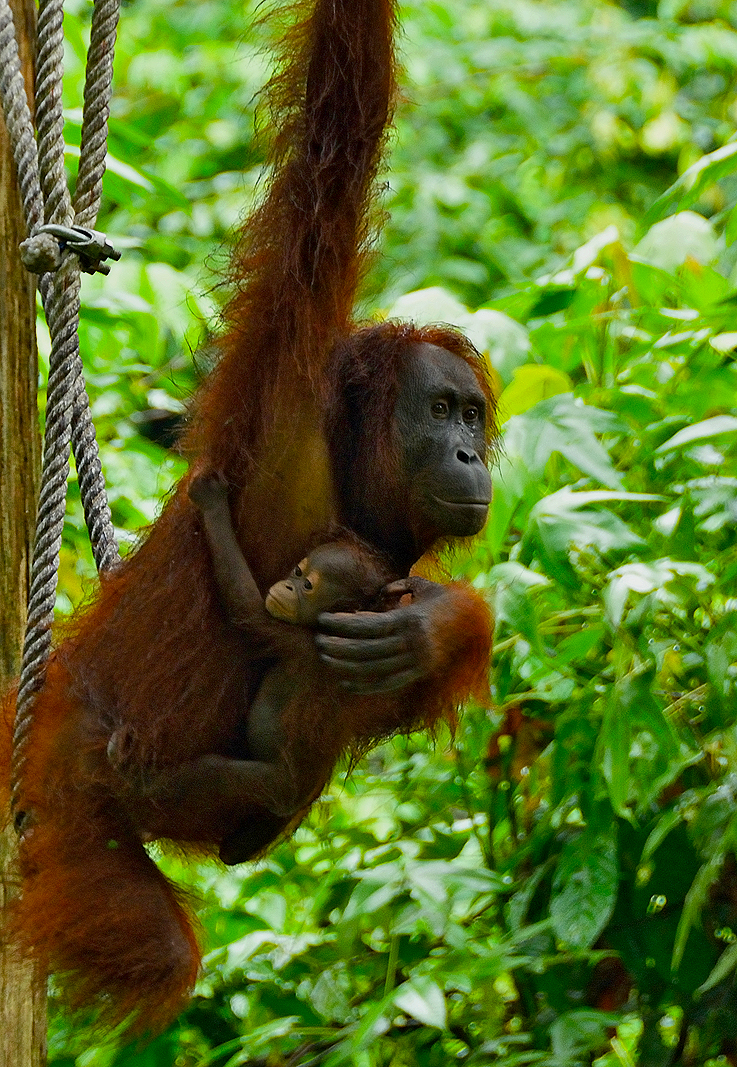
Sometime between 14 and 16 million years ago, the first among the Great Apes arose, with Orang-utans branching off from the rest of our human-ape ancestors around 14 million years ago. The Orang-utans spread into southern Asia after this, unlike the remaining Great Apes, who continued to thrive in Africa. The largest primates of all-time arose from the same lineage as the Orang-utans, with Indopithecus arising some 9 million years ago and the single largest known primate ever, Gigantopithecus, appearing in southern China about 2 million years ago, only becoming extinct a few hundred thousand years ago.
Meanwhile, back in Africa, the gorillas branched off from the other Great Apes about 7 million years ago; they remain the largest of all the surviving primates. Then, about 6 million years ago the Great Apes split further into two main groups, with one direction giving rise to humanity’s ancestors and the other branch giving rise to chimpanzees and bonobos. The chimpanzee/bonobo branch remains unified for another 4 million years, as our closest surviving relatives — the chimpanzees and bonobos — diverged from one another a mere 2 million years ago.

Along the track of our direct ancestors, however, the developments were rapid and profound. 5.6 million years ago, the first truly bipedal ape (as opposed to knuckle-walkers), Ardipithecus, arose. Although it’s a controversial claim, the hand bones in Ardipithecus show evidence of it being a transitional fossil between the earlier Great Apes and the later Australopithecines. Then, approximately 4 million years ago, the first Australopithecus arose: the first members of the Hominina subtribe (a taxonomic classification more specific than family but less specific than genus).
Shortly thereafter, the first evidence of stone tool use appears: presently at 3.4-to-3.7 million years ago. While tool use may yet date back earlier in our evolutionary history, they were likely only made of wood and/or bone, and so have not survived the passage of time. A critical step in our evolutionary history then occurred a little more than 2 million years ago, as our hominid ancestors faced food shortages. One evolutionarily successful approach was to develop stronger jaws, which gave us the capability to eat foods (like nuts) that were otherwise inaccessible. But another approach was also successful: to develop weaker jaws. Paradoxically, those weaker jaws allowed the hominid skull to increase in cranial capacity, supporting the existence of larger brains. For once, it was brains, not brawn, that enabled our ancestors to access food.

While both groups survived for a time, the larger-brained group was more adaptable to changes, and they continued to survive, while the strong-jawed hominids died out after less than 1 million years on Earth. This is the evolutionary path that — to the best of our knowledge — led to the development of the genus Homo, which first arose about 2.5 million years ago. In particular, the species Homo habilis, known colloquially as “handy man,” had larger brains than their Australopithecine counterparts and displayed far more ubiquitous tool use.
Further developments would soon ensue. Around 1.9 million years ago, the first Homo erectus specimens are known to have evolved. This human ancestor not only walked fully upright, but had much larger brains than Homo habilis: nearly twice as large as their predecessors, on average. Homo erectus became the first direct human ancestor to leave Africa, and the first to display evidence that they harnessed fire. Homo habilis was likely driven to extinction more than a million years ago, as were the last of the Australopithecines.
Across the world, new examples of the genus Homo emerged, including Homo antecessor in Europe (which may be an evolved habilis or erectus, or an early form of heidelbergensis) about 1.2 million years ago, followed by Homo heidelbergensis some 600,000 years ago. Approximately 700,000 years ago, the earliest evidence for cooking appears (although the practice may go all the way back to Homo erectus), and then about 500,000 years ago, the first evidence for clothing appears.
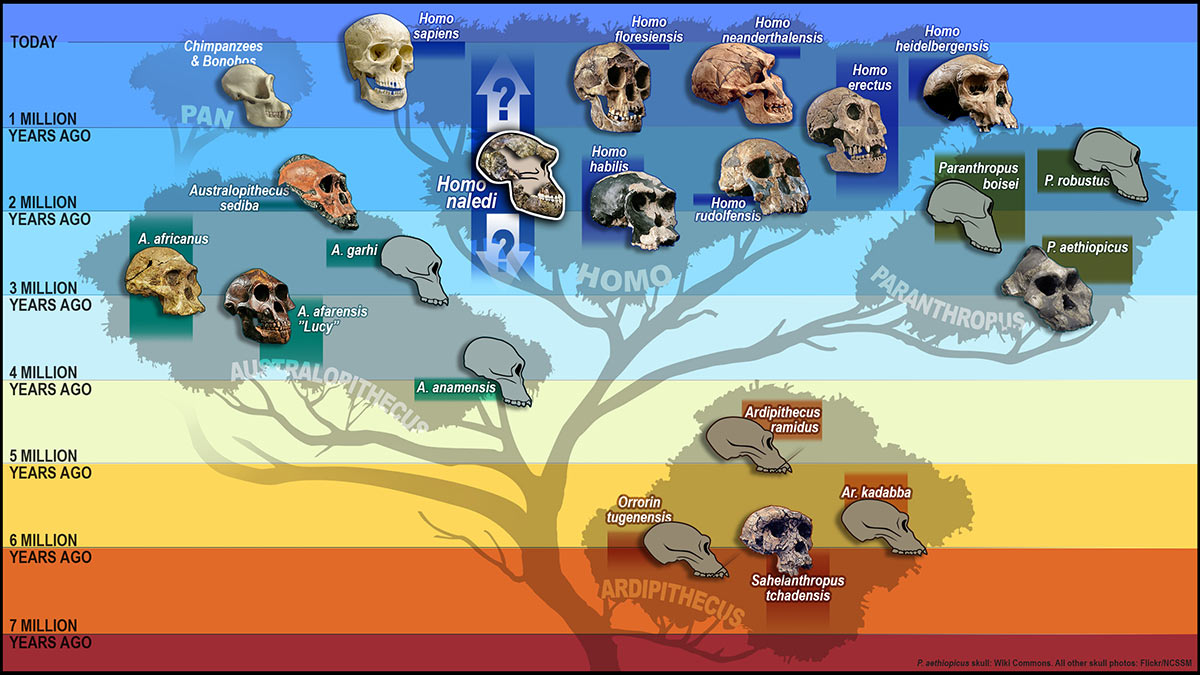
Approximately 300,000 years ago, the first Homo sapiens — anatomically modern humans — arose alongside our other hominid relatives. (Interestingly, around this same time, the first Denisovans appeared; it is still unknown whether they were the same species as us.) It is unknown whether we descended directly from Homo erectus (which only went extinct 140,000 years ago), Homo heidelbergensis, or Homo antecessor, although Neanderthals, which arrive slightly later at 240,000 years ago, most certainly were descended from Homo heidelbergensis. Humans and Neanderthals interbred, with the last Neanderthal population going extinct only around 40,000 years ago. Modern speech is known to have arisen no later than the earliest Homo sapiens, and it may yet turn out that our other hominid cousins possessed a rich system of language as well.
It took 13.8 billion years of cosmic history for the first human beings to arise, and we did so relatively recently: just 300,000 years ago. As little as 300,000 years ago, there may have been as many as eight distinct species of the genus Homo that coexisted on Earth; today, only Homo sapiens remains. For 99.998% of the time that had passed since the Big Bang, the cosmos had no human beings at all. This is incredibly impressive: our entire species has only existed for the most recent 0.002% of the Universe’s history. Yet, in that short time, we’ve managed to figure out the entire cosmic story that led to our existence. The story doesn’t end today and doesn’t end with us, but will continue being written long after our species has succumbed to the ultimate fate of all living creatures: eventual extinction.





